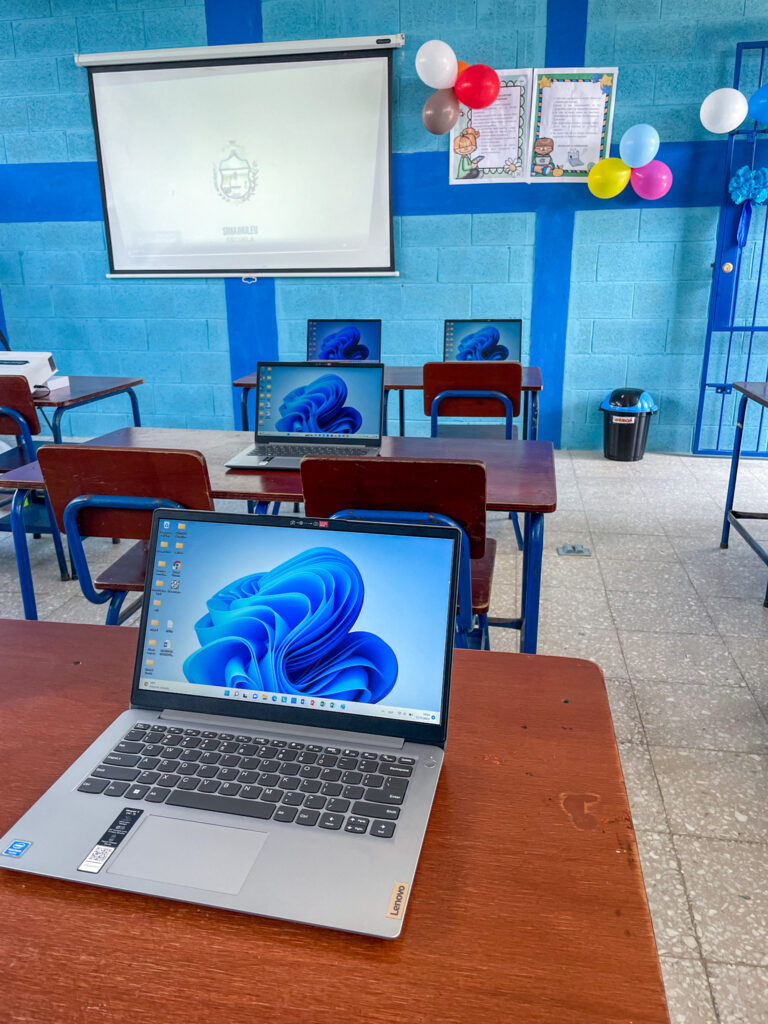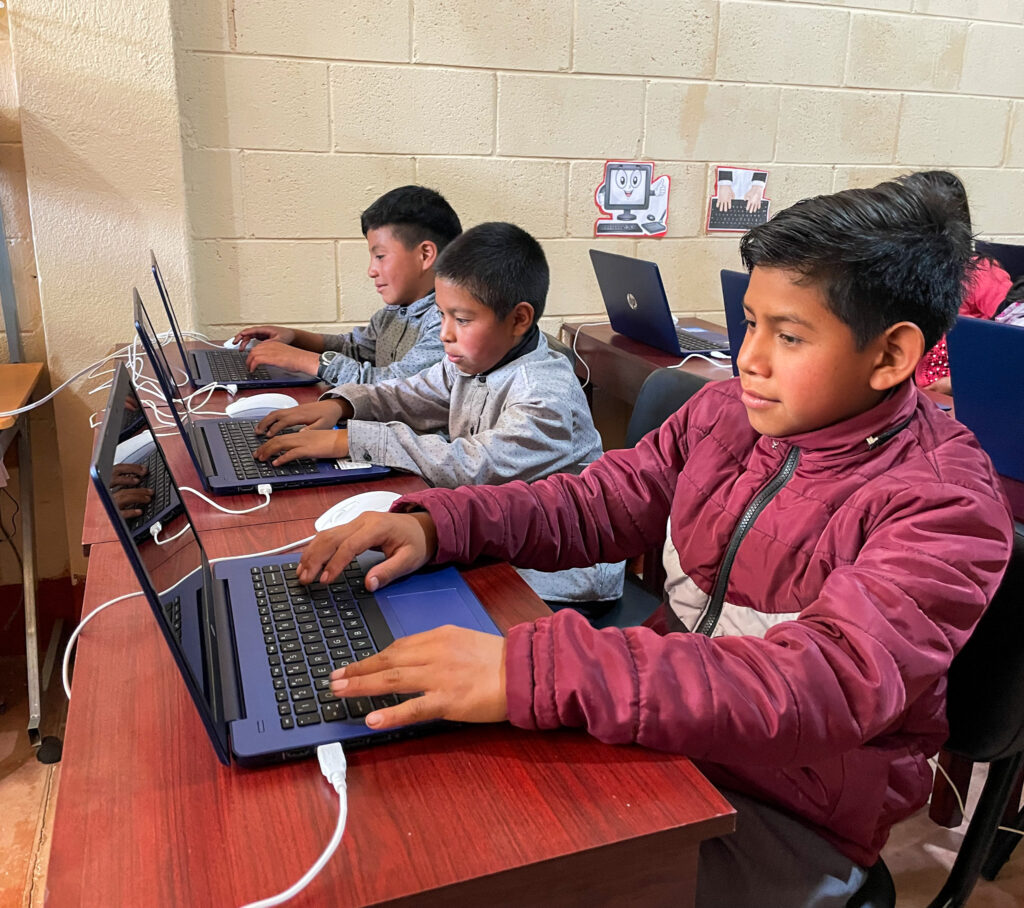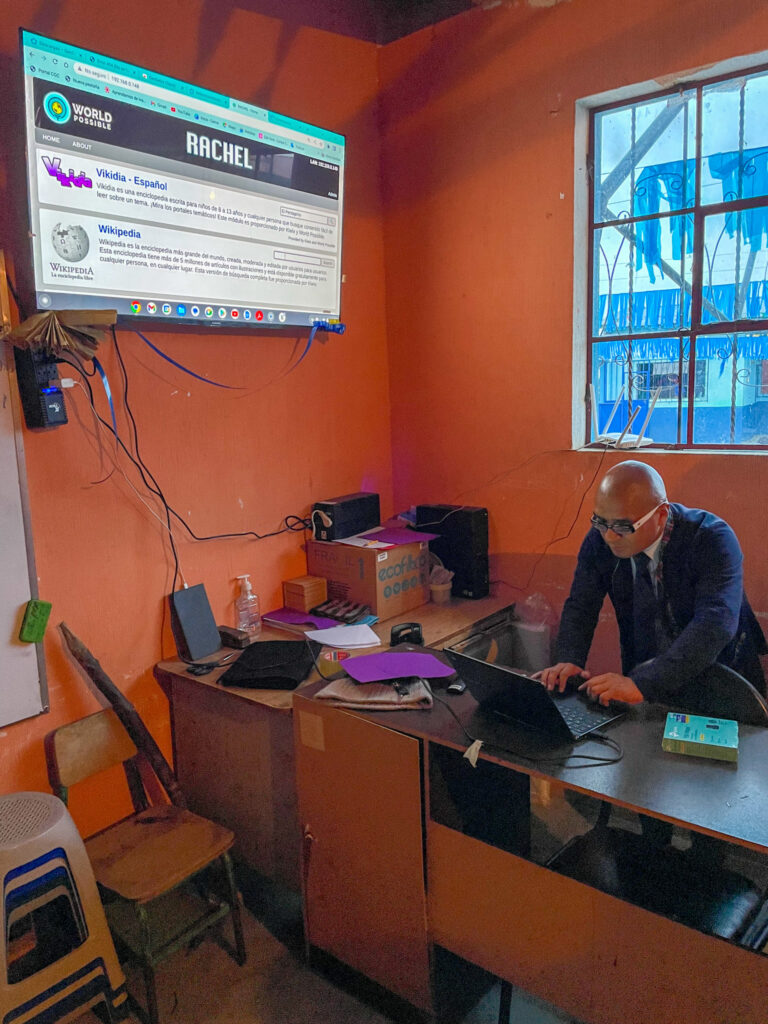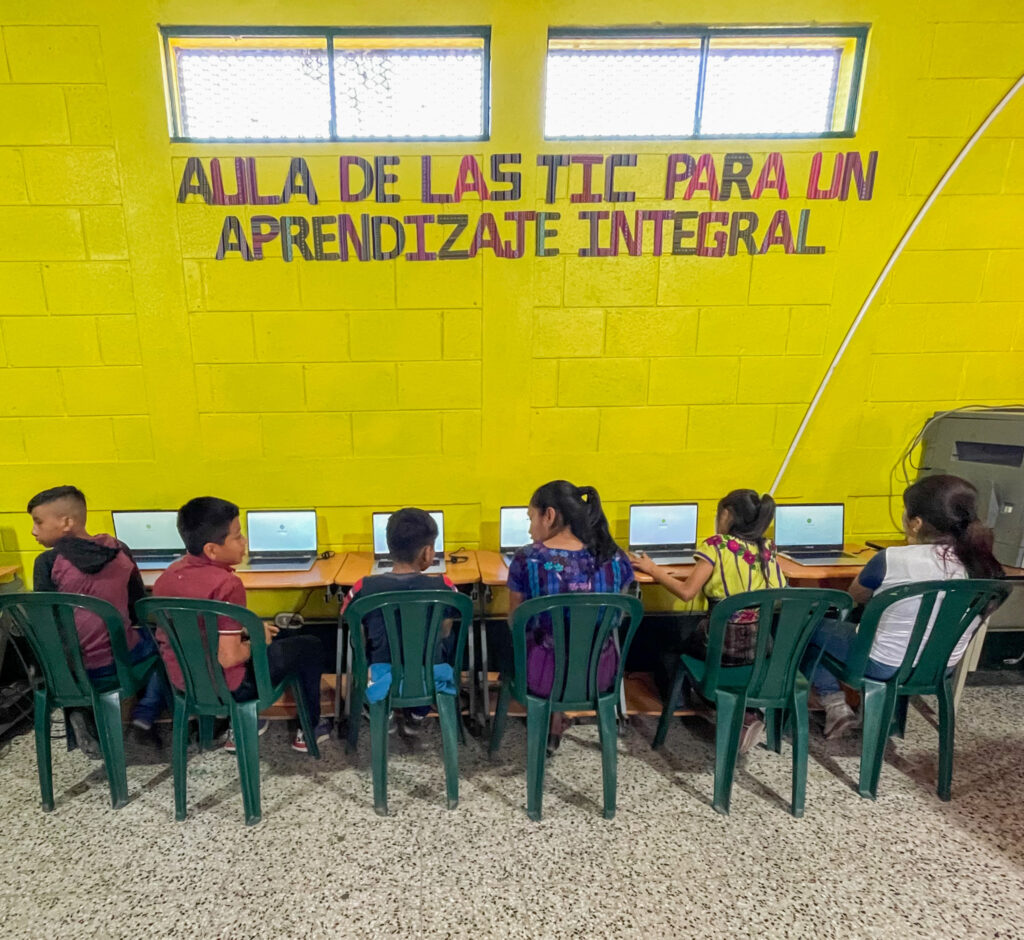In Guatemala, approximately 60% of entry-level jobs require computer proficiency[1]. Unfortunately, children in rural communities lack access to computer technology. Without technical skills, secondary education is more difficult as computer classes are required. As the digital divide grows, so do income disparities, inequality, and poverty[1,2].
ConnectED 2024 Fellows Sammy Muj and Wilfredo Yac are tackling this issue head-on with technology projects in their schools. Sammy works in two primary schools (ages 6-12) and one middle school (ages 13-15) students. Wilfredo, a primary school teacher in a different rural public school, also works as a music instructor with students of all ages.
The Importance of Technology in Education
Both Sammy and Wilfredo see the significant impact technology can have on education in rural communities. Sammy observes that having tech tools like TVs as visual aids helps facilitate lectures, making complex subjects easier to understand. “With a classroom TV, I can play biology or anatomy videos, and the kids understand better. I would say about 80-90% of the class starts understanding more with visual aids,” he notes.
Wilfredo agrees, emphasizing, “It’s equally important not only to have the technology but also to know how to utilize it for educational gain,” he says. He explains that while students are familiar with using technology for social media, there is a gap in using it for learning purposes.

Practical Applications in the Classroom
In their classrooms, both teachers have implemented innovative ways to use technology. Sammy highlights the usefulness of printers, which allow him to print worksheets for individual activities. “Having access to a printer allows me to print worksheets for the kids to do activities themselves, as opposed to just having some students participate when I put the problem on the board” he explains.
Wilfredo provides various examples of technology-enhancing classroom activities such as using tools like online surveys that speed up group activities, and platforms like Google Drive and Excel that make teacher collaboration easier. He even recorded a song composition on YouTube for his music students to practice at home, demonstrating how teaching can extend beyond the classroom.

Early Introduction to Technology
Both educators stress the importance of introducing technology to children early. Wilfredo mentions, “If you teach them from a young age how to use technology for educational benefit, it becomes systemized and the standard.” Sammy adds that integrating technology into lessons helps retain students’ interest in school and promotes equitable access to practical education.
Challenges and Solutions
While they acknowledge the challenges of integrating technology in rural schools, both Sammy and Wilfredo offer practical solutions. Wilfredo suggests using available technology at home, such as shared internet, cell phones, and laptops. For instance, he uses Duolingo on his cellphone during English lectures, passing it around so each student gets a turn.
Sammy points out that lacking proper technology slows down learning. “The lectures move slower, we don’t have access to all the information we could, and there is a lack of diversity in learning styles for the students,” he says. Addressing the technological gap can help retain students’ interest and promote continued education, especially considering the non-mandatory nature of middle school in Guatemala.

Encouragement and Impact
Both educators believe that access to technology and technological literacy incentivizes students to continue their education. They also acknowledge the role of parents in encouraging their children to pursue higher education. Migration due to a lack of local opportunities is a significant issue, with Sammy noting that 80% of his primary school students have families who have migrated.
Both educators believe that access to technology and technological literacy incentivizes students to continue their education. They also acknowledge the role of parents in encouraging their children to pursue higher education. Migration due to a lack of local opportunities is a significant issue, with Sammy noting that 80% of his primary school students have families who have migrated.
In conclusion, integrating technology into their classrooms has shown Sammy and Wilfredo how they can bridge the digital divide in their communities. “Technology facilitates lesson comprehension. If we utilize technology for good, it will provide better educational results,” Sammy states. Their efforts demonstrate how even small steps can significantly impact education in rural Guatemala.

Bibliography
Guatemala Literacy Project. Computer Program [Internet]. The Guatemala Literacy Project. [cited 2024]. Available from: https://www.guatemalaliteracy.org/the-project/computers/
United States Agency for International Development. Technology for the Little Ones in Guatemala | Archive – U.S. Agency for International Development [Internet]. 2012-2017.usaid.gov. Available from: https://2012-2017.usaid.gov/results-data/success-stories/technology-little-ones-guatemala
